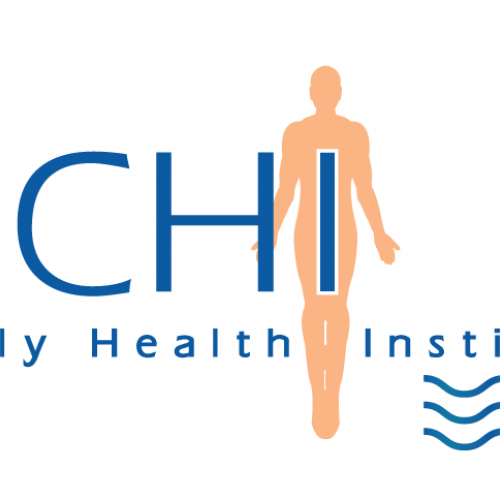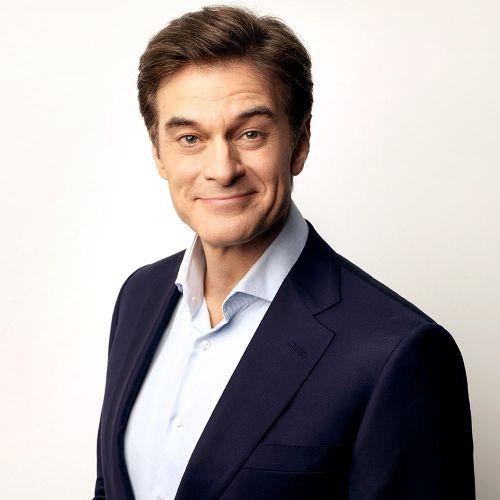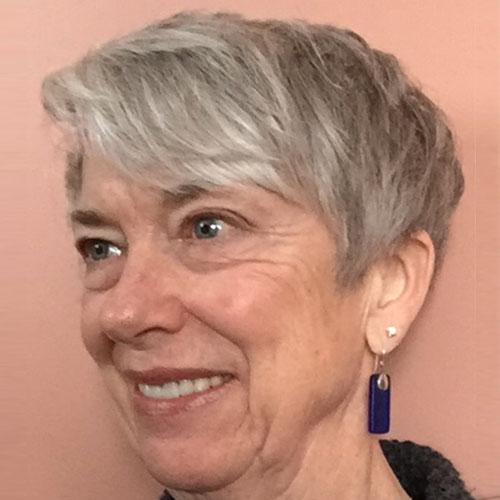This wonderful class will teach students to use a specific synovial fluid rhythm to release restrictions specific to all body articulations, including "fused" embryological articulations.
This material has been successfully taught for over 20 years in the lymph curriculum and has no prerequisite.
- Learn how to release joints in the body in a non-invasive manner.
-
Learn articulation fluid release techniques for:
- Peripheral (appendicular) articulations: upper extremity from acromioclavicular joint and clavicle to the hand articulations - embryological structures
- Two types of rib cage articulations – sternum and embryological structures
- Spine: cervical, thoracic, lumbar, sacral, and coccyx – intervertebral, facets (zygapophyseal), and embryological articulations
These techniques use fluid and are gentle and can be applied with ease and great success to babies, elderly, and even animal.
When the bony framework is out of place numerous types of pathologies can happen from pain, dysfunction, discomfort, asymmetry/misalignment, range of motion abnormalities, tissue/tone changes, affecting the muscles, fascia, viscera, or bones themselves.
A wide range of pathologies can be associated with joint dysfunction and may be alleviated by these techniques, including:
- Musculoskeletal pain in general
- Neck pain
- Some headache, dizziness, or vertigo
- Joint pain such as shoulder pain, elbow pain, wrist pain, etc.
- Carpal tunnel syndrome
- Treatment of accidents and injuries, including some whiplash
- Work injuries
- Sport injuries
- Repetitive stress injury (RSI), joint or muscle overuse
- Arthritis, rheumatoid arthritis
- Some gastrointestinal disorders (somato-visceral reflex)
- Some nerve entrapment
- Stress, general vitality, and well being
Embryological articulations assessed and released during FAR-U classes:
- Metopic suture
- Symphysis menti
- Vertical sternal bars
- Sternebrae
- Posterior neural arch of vertebrae, centrum, and other articulations
- Diaphysis/epiphysis of extremities
These techniques use fluid and are non-invasive and can be applied with ease and great success to babies, elderly, and even animal.
Class length 3 days
This is a basic/introductory level class.
Scientific Facts:
- Did you know that radiopaque substances injected in human articulations are drained/found a few minutes later in the lymphatic vessels? Lymphatic dysfunction is found in degenerative joint disease. It may begin to explain how lymphatic techniques can help joint release.
- Albuquerque M., De Lima J.P. Articular Lymphoscintigraphy in Human Knees Using Radiolabeled Dextran. Lymphology. 1990, 23, P.215-218.
- Vittas D., Reimann I., Nielsen S.L.. Intraarticular Lymphoscintigraphy of the Human Knee Joint: A Preliminary Study. Lymphology. 1987, 20, P.98-101.
- Lymphatic vessels are distributed in soft tissues around the joint capsule, ligaments, fat pads, and muscles of normal knees. The number of lymphatic vessels, particularly the number of capillaries, are significantly increased in joints of mice with mild osteoarthritis (OA), while the number of mature lymphatic vessels was markedly decreased in joints of mice with severe OA. OA knees exhibited significantly decreased lymph clearance (manual therapist can help stimulate lymph flow). The number of both capillary and mature lymphatic vessels was significantly decreased in the joints of patients with OA.
- Shi J, Liang Q, Zuscik M, Shen J, et al. Distribution and alteration of lymphatic vessels in knee joints of normal and osteoarthritic mice. Arthritis Rheumatol. 2014 Mar;66(3):657-66. DOI: 10.1002/art.38278. PMID: 24574226
- There is decreased drainage from the joint during an arthritic flare (manual therapist can help stimulate lymph flow). Alterations in lymphatic flow may be of importance in the fluctuating course observed in chronic inflammatory diseases. In TNF-Tg mice, a model of inflammatory–erosive arthritis, the popliteal lymph node (PLN) enlarges during the pre-arthritic ‘expanding’ phase, and then ‘collapses’ (i.e. reduction in lymph node volume and contrast enhancement) with adjacent knee flare associated with the loss of the intrinsic lymphatic rhythm/pulse.
- Bouta EM, Wood RW, Brown EB, et al. In vivo quantification of lymph viscosity and pressure in lymphatic vessels and draining lymph nodes of arthritic joints in mice. J Physiol. 2014 Mar 15;592(6):1213-23. DOI: 10.1113/jphysiol.2013.266700. Epub 2014 Jan 13. PMID: 2442135
- Recent studies in mice demonstrated alterations in lymphatics from affected joints precede flares (so possibility of a potential preventative manual therapy).
- Bouta EM, Wood RW, Perry SW, et al. Measuring intranodal pressure and lymph viscosity to elucidate mechanisms of arthritic flare and therapeutic outcomes. Ann N Y Acad Sci. 2011 Dec;1240:47-52. DOI: 10.1111/j.1749-6632.2011.06237.x. PMID: 22172039
- The lymph generated in RA joints, as well as lymphatic flow, are increased during disease progression and contain significantly elevated levels of pro-inflammatory cytokines and chemokines. Manual drainage can help evacuation of these pro-inflammatory molecules.
- Olszewski WL, Pazdur J, Kubasiewicz E, et al. Lymph draining from foot joints in rheumatoid arthritis provides insight into local cytokine and chemokine production and transport to lymph nodes. Arthritis Rheum. 2001;44:541–549.
- The blockade of lymphangiogenesis at the beginning of arthritis development increased the severity of joint tissue injury. Again, Manual drainage can help drain these joints.
- Guo R, Zhou Q, Proulx ST, et al. Inhibition of lymphangiogenesis and lymphatic drainage via vascular endothelial growth factor receptor 3 blockade increases the severity of inflammation in a mouse model of chronic inflammatory arthritis. Arthritis Rheum. 2009;60:2666–2676.
- Many studies suggest that there is a direct relationship between lymph flow dysfunction and inflammation. First, loss-of-function studies have shown that inhibition of lymphangiogenesis with anti-VEGFR3 neutralizing antibodies decreases lymphatic flow from the foot and increases the severity of ankle joint inflammation. Secondly, lymphangiogenesis induced via intra-articular injection of recombinant adeno-associated virus that overexpresses VEGF-C significantly increased lymph flow and reduces inflammation in arthritic joints.
- Zhou Q, Wood R, Schwarz EM, et al. Near-infrared lymphatic imaging demonstrates the dynamics of lymph flow and lymphangiogenesis during the acute versus chronic phases of arthritis in mice. Arthritis Rheum. 2010 Jul;62(7):1881-9. DOI: 10.1002/art.27464. PMID: 20309866
Conflict of Interest: All classes presented by Chikly Health Institute have no financial conflict of interest.
CHI is not sponsored by outside organizations or corporations.
Please read "Our Policies" for more information: https://chiklyinstitute.com/Policies
• Contact Continuing Education (CE) Hours Total: 18 CEUs for massage therapists - NCBTMB Approved Provider # 451238-10
NCBTMB CEUs are accepted in every US state for NCBTMB certification renewal.
Most states accept NCBTMB for license renewal but not all. We are also approved for NY state.
Please look here for more information: http://www.ncbtmb.org/map/requirements-map.
Because certification and license renewal policies vary from state to state, it's important for you to make sure the CEUs are accepted wherever you practice. Therefore, please be aware that this information may not apply in your state.
Check your state’s website at: http://www.ncbtmb.org/regulators/state-info.
• 18 CEU's for OT and OTA by American OT Association (AOTA)
AOTA Provider # 10304
The assignment of AOTA CEUs does not imply endorsement of specific course content, products, or clinical procedures by AOTA.
• 18 hours approved by the Massage Therapy Association of Manitoba, Canada (MTAM)
• 18 hours approved by the Certified Registered Massage Therapy Association of Alberta, Canada (CRMTA)
We are in the process of providing Continuing education for numerous other professions. Please check back to this page later as we will post all updates.
- Expand your understanding of fluid compartments.
- Articulation fluid release techniques for:
- Peripheral (appendicular) articulations: upper extremity from acromioclavicular joint and clavicle to the hand articulations - embryological structures
- Two types of rib cage articulations – sternum and embryological structures
- Spine: cervical, thoracic, lumbar, sacral, and coccyx – intervertebral, facets (zygapophyseal), and embryological articulations.
INSTRUCTIONAL METHODS
- Lecture
- Study Guide
- Question & Answer
- PowerPoint Slides
- Demonstration
- Practice sessions
- Review
SCHEDULE (Subject to Change)
Day One
8:30 - Registration
9:00 - 11:00 - Introduction, teachers, students, teaching assistants, and facilitator. Teaching material.
- Anatomy and physiology of the articulation fluid rhythm and how it affects posture, range of motion, and body mechanics.
- The 3 components of Fluid Articular Release: Practice
- Protocol for Fluid Articular Release-Upper
11:00 - 11:15 Break / group discussion
11:15 - 12:30 - Fluid Articular Release in the upper extremity and release of its embryological articulations
12:30 - 2:00 Lunch
2:00 - 3:30 - Fluid Articular Release in the upper extremity and release of its embryological articulations (end).
3:30 - 3:45 Break / group discussion
3:45 - 5:30 - Fluid Articular Release in the thorax and release of its embryological articulations
Day Two
9:00 -9:30 - Questions and answers
- Case studies
9:30-11:00 - Fluid Articular Release in the thorax and release of its embryological articulations (end)
11:00 - 11:15 Break / group discussion
11:15 - 12:30 - Fluid Articular Release in the spine and release of its embryological articulations
12:30 - 2:00 Lunch
2:00 - 3:00 - Fluid Articular Release in the spine and release of its embryological articulations (end)
3:00 - 3:30 - Fluid Articular Release in the cervical area and release of its embryological articulations
3:30 - 3:45 Break / group discussion
3:45 - 4:45 - Fluid Articular Release in the Face and release of its embryological articulations
4:45 – 5:30 - Fluid Articular Release in the Face and release of its embryological articulations (end)
Day Three
9:00 - 10:30 - Questions and answers
- Fluid Articular Release in the Cranium and release of its embryological articulations
10:30 - 10:45 Break / group discussion
10: 45 - 12:45 - Fluid Articular Release in the Cranium and release of its embryological articulations (end)
12:45 - 2:00 Lunch
2:00 - 2:30 - Intraosseous approach
2:30 - 3:30 - Intraosseous approach
- Take home protocol.
- Final questions and answers.
- Self-Reflection and identification of changes for practitioner’s practice.
LEARNER’S OBJECTIVES (Subject to Change)
- By the end of the 1st-day participants will be able to correctly demonstrate on a live person the 3 components of the Fluid Articular Release
- By the end of the course participants will be able to correctly demonstrate on a live person how to release a dysfunction of a regular articulation of the upper extremity
- By the end of the course participants will be able to correctly demonstrate on a live person how to release a dysfunction of an embryologic articulation of the upper extremity
- By the end of the course participants will be able to correctly demonstrate on a live person how to release a dysfunction of a regular articulation of the thorax
- By the end of the course participants will be able to correctly demonstrate on a live person how to release a dysfunction of an embryologic articulation of the thorax
- By the end of the course participants will be able to correctly demonstrate on a live person how to release a dysfunction of a regular articulation of the spine
- By the end of the course participants will be able to correctly demonstrate on a live person how to release a dysfunction of an embryologic articulation of the spine
- By the end of the course participants will be able to correctly demonstrate on a live person how to release a dysfunction of an articulation of the cervical area
- By the end of the course participants will be able to correctly demonstrate on a live person how to release a dysfunction of a regular articulation of the face
- By the end of the course participants will be able to correctly demonstrate on a live person how to release a dysfunction of an embryologic articulation of the face
- By the end of the course participants will be able to correctly demonstrate on a live person how to release a dysfunction of a regular articulation of the cranium
- By the end of the course participants will be able to correctly demonstrate on a live person how to release a dysfunction of an embryologic articulation of the cranium
- By the end of the course participants will be able to correctly demonstrate on a live person how to release an intraosseous dysfunction of the humerus
- By the end of the course participants will be able to correctly demonstrate on a live person how to release an intraosseous dysfunction of the ulna
A manual therapist with a healthcare license
Pre-Requisite Class: None
LDT1 is suggested if you need to heighten your palpation skills and attune to inner fluid rhythms.
Review the following plates in Netter's Atlas of Human Anatomy (1st Edition Netter=1E, 2nd Edition Netter=2E, 3rd Edition Netter=3E, 4th Edition Netter=4E)
- Periosteum
- Sternum, manubrium, xiphoid process, sternochrondral and chondrocostal articulation of thorax
- Costovertebral and costotransverse articulation, intervertebral and zygapophyseal articulations (facettes)
- Spinous and transverse processes
- Odontoid of C2, atlanto-odontoidal articulation, alar ligament
- Cranial bones and structures: frontal bone, parietal bone, temporal bone, occipital bone, sphenoid bone, ethmoid bone external occipital protuberance (inion)
- Cranial sutures: coronal, sagittal, parieto-temporal, parieto-occipital (occipito-mastoid), lambdoid, metopic suture
- Facial and cervical bones: mandible, maxilla, palatine bone, zygomatic bone, nasal bone, lacrimal bone, symphysis menti, hyoid bone greater and lesser cornu. 2E=1,3E=2,4E=2, 2E=49,3E=51,4E=55
- Bones and articulations of the upper extremities, shoulder, scapula, clavicle, acromion, humerus, coracoid, epicondyle, radius, ulna, MCP (metacarpophalangeal). 2E=231,3E=342,4E=354
Price: $950
Registration Discount: $750
This is a class with no CHI class prerequisites. If you have never taken a class with CHI, you are invited to receive a $300 discount ($750) on this class if you pay in full 45 days before the class start date.
(If the class is not paid in full 45 days before the start of class, the rate automatically goes up to $950)
For all other participants, you can receive the $750 discounted price by using your CHI-Pak or by registering and making a minimum deposit of $200 at a prior CHI class and paying the balance in full 45 days before the class start date.
Repeat: $475







